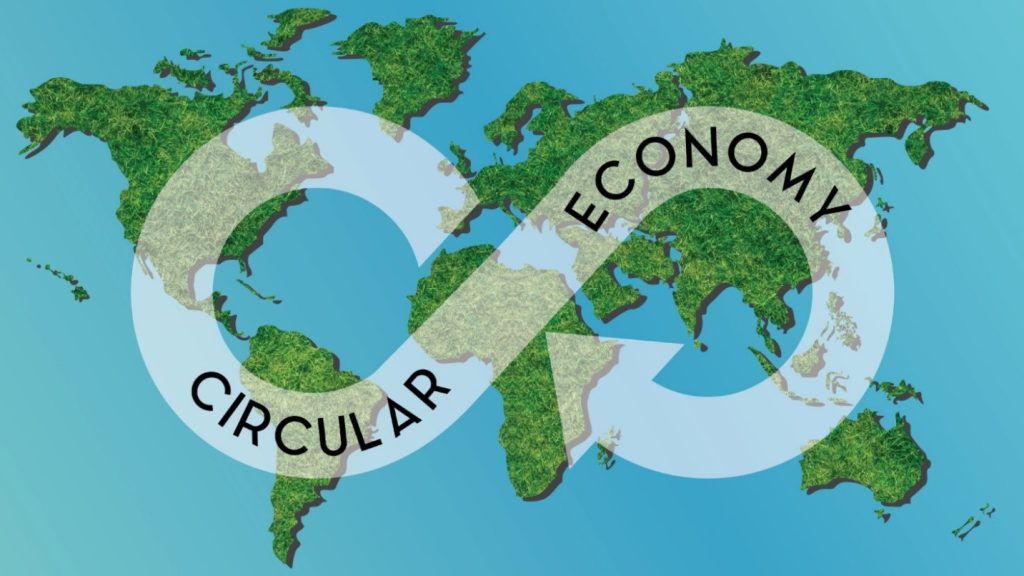In a world grappling with the consequences of overconsumption, resource depletion, and environmental degradation, the circular economy emerges as a beacon of hope. It’s not just a buzzword; it’s a transformative approach to how we produce, consume, and think about resources. At its core, the circular economy challenges the traditional linear model of “take, make, dispose” and replaces it with a system designed to regenerate and restore. It’s about creating a closed-loop system where waste is minimized, and resources are kept in use for as long as possible.
Why the Circular Economy Matters
The linear economy has brought us unprecedented growth, but it has also brought us to the brink of ecological collapse. Every year, we extract nearly 100 billion tons of raw materials from the Earth, and a staggering 90% of these resources end up as waste. This model is not only unsustainable but also economically inefficient. The circular economy offers a solution by decoupling economic growth from resource consumption.
By rethinking how we design products, manage supply chains, and handle waste, the circular economy can reduce greenhouse gas emissions, conserve natural resources, and create new economic opportunities. It’s a win-win for both the planet and the economy.
The Principles of a Circular Economy
The circular economy is built on three fundamental principles:
1. Design Out Waste and Pollution: From the very beginning, products are designed with their end-of-life in mind. This means using materials that can be easily recycled, repaired, or repurposed. It also means eliminating toxic substances that can harm the environment.
2. Keep Products and Materials in Use: Instead of discarding products after their initial use, the circular economy encourages extending their lifespan through repair, refurbishment, and remanufacturing. When a product can no longer be used, its materials are recovered and reused to create new products.
3. Regenerate Natural Systems: The circular economy goes beyond reducing harm; it actively seeks to restore and regenerate ecosystems. This means adopting practices like regenerative agriculture, which rebuilds soil health, and using renewable energy to power production processes.
The Benefits of a Circular Economy
The shift to a circular economy offers a multitude of benefits:
– Environmental Benefits: By reducing waste and conserving resources, the circular economy helps mitigate climate change, protect biodiversity, and reduce pollution.
– Economic Benefits: The circular economy can drive innovation, create new jobs, and generate economic growth. According to the Ellen MacArthur Foundation, transitioning to a circular economy could unlock $4.5 trillion in economic value by 2030.
– Social Benefits: A circular economy promotes fair labor practices, supports local communities, and ensures that resources are distributed more equitably.
How You Can Contribute to the Circular Economy
The transition to a circular economy requires collective action. Here are some ways you can contribute:
– Choose Quality Over Quantity: Invest in durable, well-made products that last longer and can be repaired.
– Recycle and Compost: Properly dispose of waste to ensure materials can be recovered and reused.
– Support Circular Businesses: Patronize companies that prioritize sustainability and circular practices.
– Advocate for Change: Encourage policymakers and businesses to adopt circular economy principles.
The Road Ahead
The circular economy is not just a trend; it’s a necessity. As we face the dual challenges of climate change and resource scarcity, rethinking our economic systems has never been more urgent. By embracing the circular economy, we can create a future that is not only sustainable but also prosperous and equitable.
At Green Glimpse, we believe that the circular economy is the key to unlocking a brighter, greener future. Join us as we explore this transformative approach and work together to build a world where waste is a thing of the past, and resources are valued and preserved for generations to come.
Conclusion:
The circular economy is a powerful solution to today’s environmental and economic challenges, offering a sustainable path forward by minimizing waste and maximizing resource efficiency. It’s a system that benefits the planet, drives innovation, and creates opportunities for all. The time to embrace this transformative approach is now—our future depends on it.

